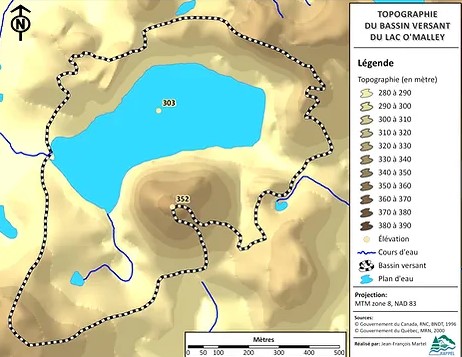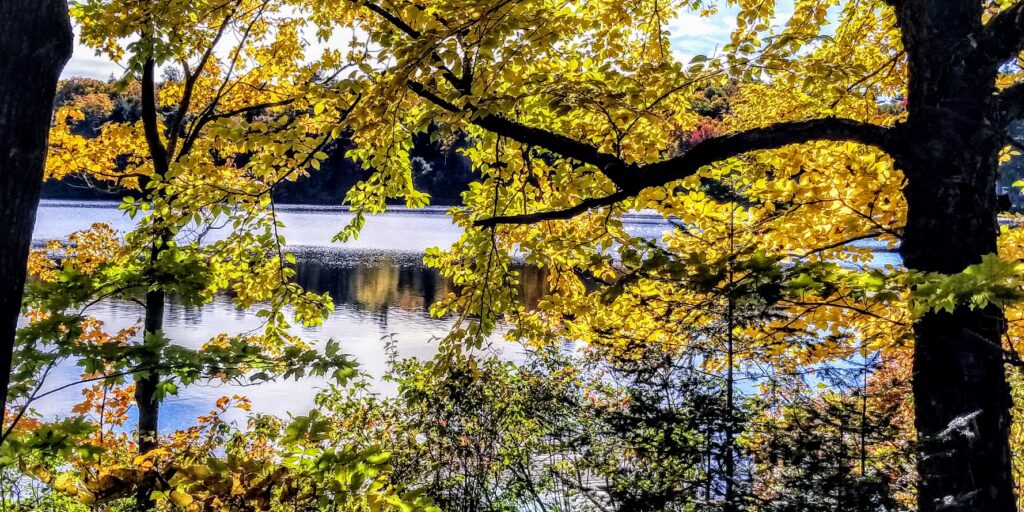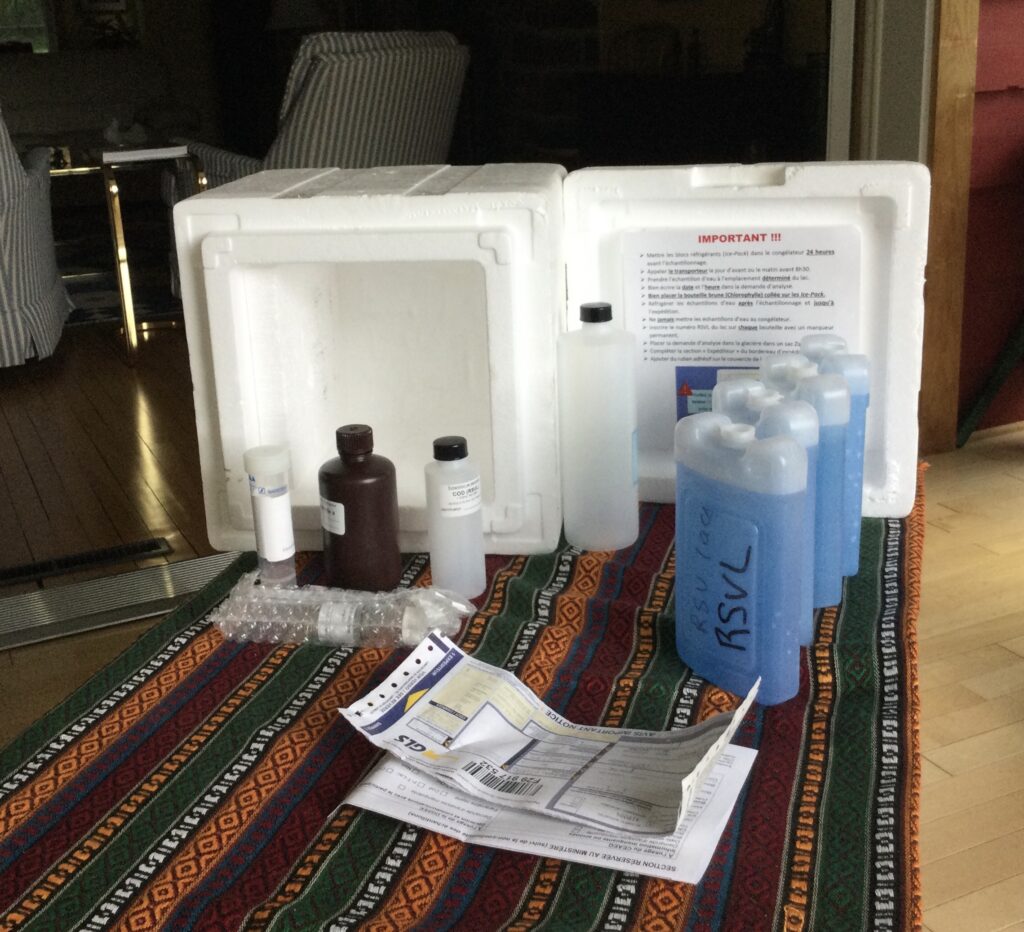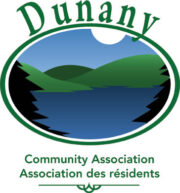France and I participated in the Forum national sur les lacs on June 7th and 8th, held at Mont-Tremblant. In the following lines, I will share with you the main challenges and initiatives undertaken during this summit to better protect Quebec’s lakes.

At the top of the list is Eurasian water-milfoil
Instead of providing you with a comprehensive treatise on this plant, I have chosen to talk to you about Lake O’Malley. It is a beautiful small lake, roughly the size of Boyd Lake, located in the Eastern Townships, at the base of Mount Orford. It is a headwater lake with an average depth of 3.8 meters.
About ten years ago, Eurasian water-milfoil was discovered there. A lot of Eurasian water-milfoil; two large beds, one at each end of the lake. Action had to be taken to save the lake.
Extensive restoration work was undertaken – the use of burlap and underwater removal with divers – to control the invasion. So far, more than $200,000 has been invested, and new budgets will be necessary each year to control the invasion. The project was primarily funded through a special tax imposed on lakeside residents and those with access rights to the lake.

You may be wondering how this non-navigable lake could have become contaminated. Experts do not have certainty, but the most likely hypothesis is that a watercraft that had sailed in a neighbouring lake, possibly the large Lake Memphrémagog where several Eurasian water-milfoil beds are found, may have been the source. Our situation is quite different as no lakes in Argenteuil are contaminated.
If you want to learn more, consult this document. (en français)
You will understand that we do not take Eurasian water-milfoil lightly, and the proverb “an ounce of prevention is worth a pound of cure” truly applies here.
That is why it is so important to wash all watercraft coming from outside before putting them in our lakes. The method is well explained here.
Navigation on lakes like ours.
In Canada, navigation is governed by the Canada Shipping Act of 2001. This law’s primary purpose is to regulate maritime transport, such as passenger ships and bulk carriers. However, it also applies to pleasure craft. To say that it is completely unsuitable for navigation on small lakes is a colossal understatement. For example, the process of designating a lake as non-navigable can easily take 7 years, even when it is in the hands of an experienced project manager. Consider this for a moment: there are tens of thousands of lakes in Quebec and as many in other provinces. It is impossible for a central government to manage that!
At the Forum, which brought together representatives from lake associations, elected officials, municipal officials, and scientists, there was a unanimous outcry: things need to change! The solution is an administrative arrangement between Ottawa and the provinces to delegate navigation on lakes like ours to the Quebec government and municipalities, which are best placed to determine if a lake should be navigable and, if required, impose certain restrictions.
Discussions between government levels are currently underway. Let’s hope they will be successful because today, it’s often a free-for-all!
Climate change.
Early springs in the boreal forest, the soil is dry and covered in needles and resin-filled cones and thus create favorable conditions for forest fires because the leaves, which burn poorly, have not yet developed. Recent events in Alberta and Quebec testify to this. But it’s not just our forests that are experiencing the effects of climate change. Our lakes are warming: +0.3 degrees Celsius in the past 15 years. It may seem small, but over a long period, it is concerning.

This means a more favorable environment for the growth of blue-green algae and other unwanted aquatic plants. Our already fragile lakes will become even more vulnerable. Measures to protect against eutrophication will need to be strengthened.
Data from the Volunteer Lake Monitoring Network (RSVL) on phosphorus.

In 2018, I wrote that the 2017 results from our lakes, particularly the phosphorus data, were too good to be true. Unfortunately, I was right. Since then, the process of measuring phosphorus has been reviewed and corrected. It was discovered that the plastic vial used absorbed phosphorus. We now use a glass container. Additionally, the size of the water sample used for analysis has been significantly increased. The laboratory robot has also been adjusted, and a few other modifications have been made. Therefore, the data from 2012 to 2018 must be revised to allow for an evaluation of the program. This correction is made based on chloride measurements. We now take an additional water sample during each collection for these measurements.
However, I want to reassure you that the data since 2019 is entirely reliable. And they show that our lakes are in very good health, as you may have read in my publication last March.
Let’s continue to protect our lakes as we protect our children.

Thank you for the education!
Thanks Jacques for the work and interest in raising our awareness on our clean lake and how to keep it that way. You’re our best lake “detective” and we love it. We take lots for granted and you state it as it really, veritably is according to test results.
Hi Jacques….excellent article and many thanks to you and your team for helping to preserve the excellent quality of our lakes, our most important asset !!! Regards,Marilyn and Gordon
Excellent article, Jacques, so much valuable information. Thank you for all you and France do. Diane & Dave
Thank you Jacques, for staying close to this very important topic, and for keeping us informed.